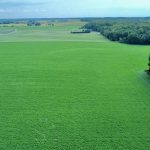The Saskatchewan government announced health spending for both the old and the young in its budget last week, with initiatives ranging from a seniors’ drug plan to a school dental sealant program.
Beginning July 1, seniors won’t pay more than $15 for each approved prescription, resulting in annual savings of about $400 per person, said finance minister Andrew Thomson.
About 115,000 seniors older than 65 are expected to be able to take advantage of the program. When fully implemented, it will cost the province $53 million annually.
“(This) is the most significant expansion of health services for seniors in a generation,” Thomson said.
Read Also

Forecast leans toward cooling trend
July saw below average temperatures, August came in with near to slightly above average temperatures and September built on this warming trend with well above average temperatures for the month.
Some criticized the plan as unsustainable, considering the aging population, the fact that people live longer and that seniors who can afford to pay for their medication will still be entitled to the benefit.
However, Thomson said if affordable medication will keep seniors healthier and out of acute care, then the budget will be alleviated in other areas. The average Saskatchewan senior earns $26,000 per year.
The 2007-08 health budget is a record $3.45 billion.
“This funding will provide comprehensive, universal, publicly accessible, publicly funded access for more than 5.6 million visits to doctors and specialists, nearly 73,000 surgeries and almost 140,000 advanced diagnostic procedures,” Thomson said.
The dental sealant program will target students between Grades 1 and 7 who attend community schools. Protection against tooth decay will lead to better overall health, Thomson said, and targeting community schools means children who might not have access to dental care will benefit.
The list of other measures in the health budget is lengthy. Highlights include:
- $90 million more to regional health authorities.
- $3 million for an intensive treatment program for children with autism.
- Coverage for insulin pumps for children younger than 18.
- Waiting lists reduced with 3,117 more MRIs and 2,000 more surgeries.
- Supplementary health coverage for 30,000 low-income workers.
The budget also provides $3 million for greater access to test results through electronic records.
“This will help patients, particularly in rural Saskatchewan, get better quality and more convenient access to test results,” said Thomson.
On the education front, the budget centrepiece is a program that exempts recent post-secondary graduates who stay in the province from paying provincial income tax on the first $20,000 of their income in each of five years following graduation.
Unused portions can be carried forward for up to five years.
Funding for the kindergarten to Grade 12 system will rise by $646 per student, an 11 percent increase over last year.
“In terms of actual money there isn’t that much more there, so it will still be a struggle,” said Roy Challis, president of the Saskatchewan School Boards Association.
“We’re glad to see that the budget promises property tax relief again because that was up in the air.”
The budget continues the 38 percent reduction on education tax on agricultural land.















